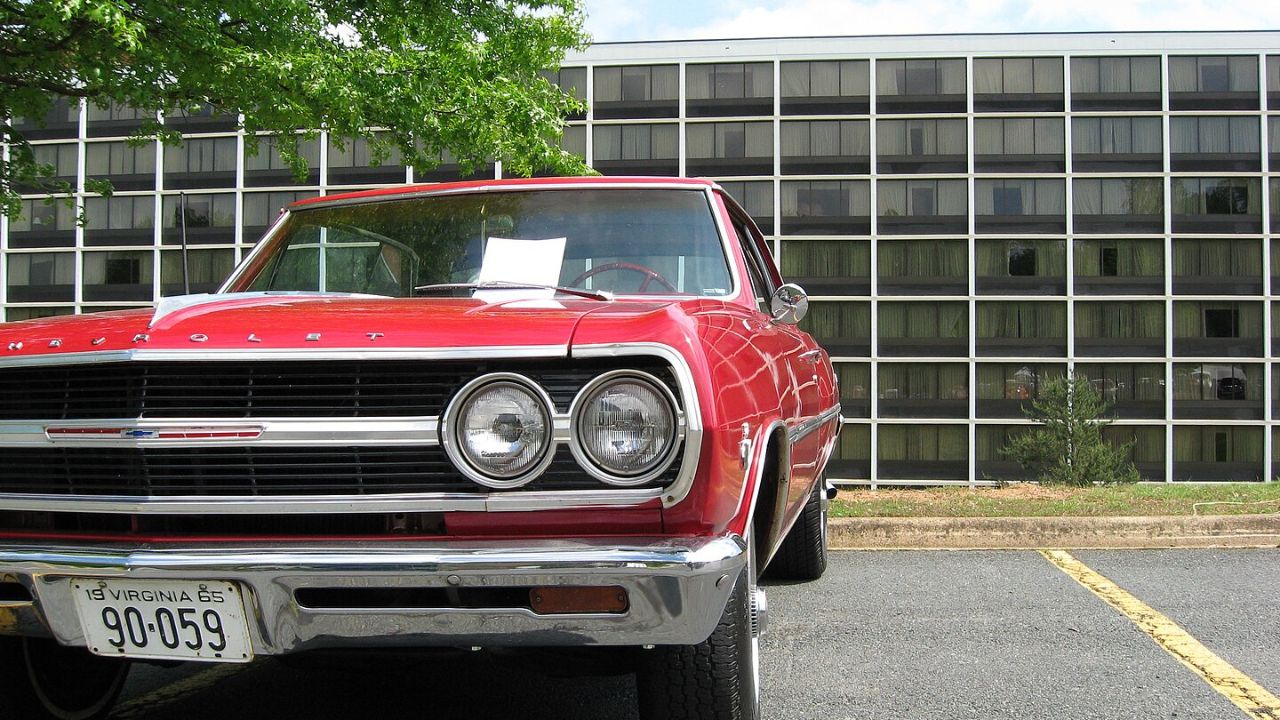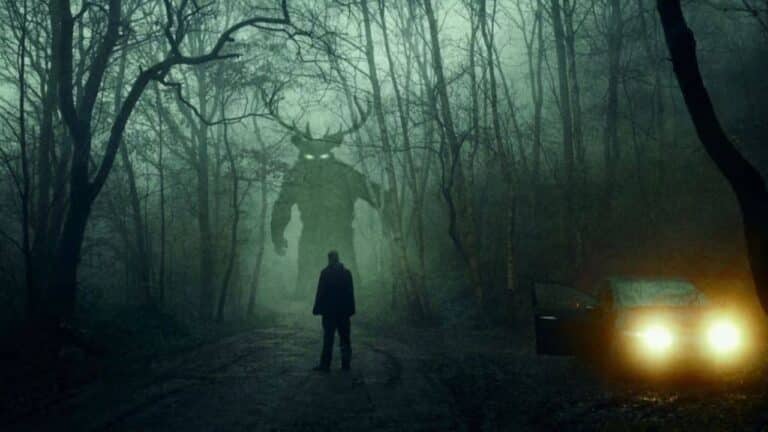13 Underrated Chevrolet Muscle Cars That Deserve More Love

Many of its counterparts have since retreated into the shadows while it continues to dominate the muscle car conversations past and present. Chevrolet has built many icons in its century-long history, including respected nameplates in the world of performance cars.
It’s nothing like the golden era of American muscle cars anymore. Still, iconic names like the Camaro keep Chevrolet front and center of the muscle car scene in the modern era, forging a legacy written in stone. The Camaro will finally bow out after the 2024 model year, but nothing suggests a permanent death.
Beneath the surface of these celebrated muscles lies a vault of underrated gems that deserve more respect. Their more famous siblings get all the love while they skulk in the shadows despite contributing to Chevrolet’s legacy. These 13 underrated Chevy muscle cars deserve more love.
1968-1974 Chevrolet Nova SS

It could take a V8 in various displacements, including 396 and 350 cubic inches. What’s so special about that? Well, it’s a small car with a big heart. It’s not every day you see a car of Nova’s size rocking GM’s 5.7-liter (350 cu-in) V8 engine producing 295-hp, complete with heavy-duty suspension and other performance hardware upgrades.
Short for Super Sport, the SS started life as a trim level and evolved into a performance package in 1968. It didn’t stop with the 350 engine. Gearheads could go for a 350-hp 6.5-liter (396 cu-in) big-block V8 or a 380-hp version. The Nova SS made an impressive case for big things coming in smaller, lighter packages.
1983-1988 Chevrolet Monte Carlo SS

The Monte Carlo SS from the ’80s is an overlooked GM muscle car with what it took to be a straight-line beast — a 305 cu-in V8 that made it a NASCAR champion. It was the first SS Monte Carlo since 1971 and featured an aerodynamic nose to give it an edge on NASCAR’s superspeedways.
If nothing else, the mid-’80s Monte Carlo SS deserves more respect for selling more units than Buick’s turbo-rated, NASCAR-aimed Regal Grand National. It benefited from the F41 handling suspension, steel 15×7-inch five-spoke wheels, and Goodyear Eagle GT tires.
1994-1996 Chevrolet Impala SS

What makes a bona fide muscle car — a fastback design with chrome bumpers? The 1994–’96 Impala SS begs to differ. It’s a full-size 4-door sedan, but under the hood lies a performance-oriented 5.7L LT1 V8, resulting in a rare blend of muscle car power and everyday practicality.
The SS was a sire of the Monte Carlo SS and an heir of the Impala lineage. Though an Impala, you wouldn’t miss the SS’s subtle menace, highlighted by a blacked-out grille, body-colored trim, and 17-inch alloy wheels. Beneath the skin are larger front and rear stabilizer bars, a sport-tuned suspension, and a limited-slip differential.
1970-1972 Chevrolet El Camino SS

As a car-truck hybrid, the El Camino is a legend that ruled the roads from the 1960s through the late 1980s. As a muscle car, though, the El Camino was not taken seriously. The SS package successfully combined truck utility with muscle car performance, with the LS5 454 cu-in V8, sport-tuned suspension, and 4-speed manual and automatic options.
The base engine was the so-called SS 369, producing up to 350 hp. The best things about the El Camino are the obvious — the hybrid segments, blacked-out grille, optional cowl-induction hood, bold racing stripes, and striking colors, including Black Cherry.
1965 Chevrolet Malibu SS

The Malibu SS deserves more respect for setting the stage for the phenomenal Chevelle SS. Underneath its unassuming Malibu exterior hides powerful V8 mills, from the base 283 cu-in V8 to the potent 327 cu-in V8 to even the legendary 396 cu-in V8 in the Z-16 version.
The SS is a performance-oriented package that transformed the Malibu into a sleeper car that meant serious business under the hood. It sold in two-door hardtop and convertible variants, with rocker panels and wheel-opening trim.
1991-1996 Chevrolet Caprice Classic

It’s a taxi. It’s the sheriff’s car. It’s also a staple family car, but the Caprice Classic of the early ‘90s could stun you with the Impala SS’s LT1 V8 and a trusty rear-wheel drivetrain. Its full-size, 4-door design that bellies its surprising performance is something else it has in common with the Impala SS.
The base engine is a 4.3-liter V6 that gearheads ignored in favor of the V8. The car maintained its daily-driver practicality with convenience features, such as air conditioning, power windows, and comfortable seating.
1982-1986 Chevrolet Camaro Berlinetta

The Berlinetta offered a different take on the classic muscle car formula. Even if that meant competing in a class all its own, it deserves respect for thinking out of the box. The Berlinetta proved a luxury-oriented Camaro doesn’t have to speak an entirely different language.
The aggressive styling was still there, with even the 5.0-liter V8 from the Camaro Z28. We love everything — the gold accents (pinstripes, emblems, and wheels), additional sound insulation, digital dashboard (advanced for its time), and tuned suspension.
Those of us who call the Berlinetta a Camaro for the lady driver can’t deny it was more a muscle car targeted at the upscale clientele — GM’s attempt to expand the Camaro’s market. Fewer than 5,000 were made.
1958-1972 Chevrolet Biscayne

The Biscayne is all but forgotten. They came in 2- and 4-door configurations, with a 4-door station wagon between 1962 and 1968. The wagon appeared again in Canada after the 1973 model year. Though a no-frills full-size car, drag racers and enthusiasts were attracted to its high-performance engines.
The “no-frills” part meant the Biscayne was an affordable model in Chevy’s full-size lineup. Their motivation came from 6-cylinder and V8 engines, with the high-performance Biscaynes getting the big-block V8 mated to performance-oriented transmissions.
2014-2017 Chevrolet SS

Yes, we’ve seen the “SS” nameplate on various performance-oriented Chevys, and that’s precisely why our books say the 2014–2017 Chevy SS is a modern interpretation of a muscle car. What else can be said about an RWD performance sedan with a 6.2-liter V8 under the hood and an optional manual shifter?
It did a beautiful work of maintaining the spirit of high performance and enthusiastic driving. It’s not a fastback and doesn’t have a long hood with a shaker scoop, but underneath its contemporary profile is a 415-hp V8 generating 415 lb-ft of torque. Perhaps it would be just a sports sedan if it didn’t have the yellow Bow Tie on the grille.
1986-1987 Chevrolet Monte Carlo SS Aerocoupe

Overlook it all you want, but the Aerocoupe is a rare NASCAR homologation special that deserves more love. That means it was built specifically to meet the NASCAR-mandated number of street-legal versions.
The Aerocoupe’s sloped rear window and a flatter trunk lip spoiler are its main highlights, but it had much more going for it. Accompanying its 305 V8 is the F41 heavy-duty suspension package, including a rear anti-roll bar, stiffer springs, a larger front anti-roll bar, and shocks.
1971-1972 Chevrolet Vega Yenko Stinger

The Vega is historic for being among history’s worst cars, summarized by MotorTrend as “a troublesome rust-bucket prone to gas tank fires and melting engines.” The Yenko Stinger was the Vega’s high-performance version.
It deserves better than the hate directed at the Vega, considering its COPO 9C2AA2 Special Vega Engine and the modifications by the famous Yenko dealership. It is a rare and intriguing version of the Vega based on the GT Hatchback model. There were an estimated 400 of these Yenko-modified Vegas built, but only 11 are known to exist today.
1964-1968 Chevrolet Chevelle 300 Deluxe

The Chevelle 300 Deluxe was an entry-level Chevelle positioned below variants like the Malibu and SS396 but full of V8 power. That meant affordable muscle car performance for the budget shoppers who don’t mind the “no-frills” package. They could get it in a 2- or 4-door configuration.
Additionally, the 300 Deluxe deserves more love for offering a noticeably nicer interior than the standard 300, with niceties like rubber floor mats (the standard 300 had a carpet), bench seats, and a one-speaker radio. It also served as the entry El Camino and Chevelle wagon.
1962-1964 Chevrolet Corvair Monza Spyder

The “one-car accident” got a turbocharged variant in the form of the 1962-1964 Chevrolet Corvair Monza Spyder. Ralph Nader’s 1965 book “Unsafe at Any Speed” dedicated an entire chapter to chewing apart the Chevy Corvair, describing it as a “one-car accident” because it didn’t need external factors to encounter an accident.
We can see how such a review can make a car unpopular, but the Monza Spyder deserves better. It was GM’s first unit-body mass-produced car in the US and one of the earliest turbocharged cars built in the USA, featuring a turbocharged version of the 145-cubic-inch horizontally opposed six-cylinder engine that made it more fun to drive.
It’s a mistake to overlook the Monza Spyder due to Corvair’s infamous reputation. It retained the sedan and coupe’s 108-inch wheelbase but offered open-top driving pleasure, complete with bucket seats.





